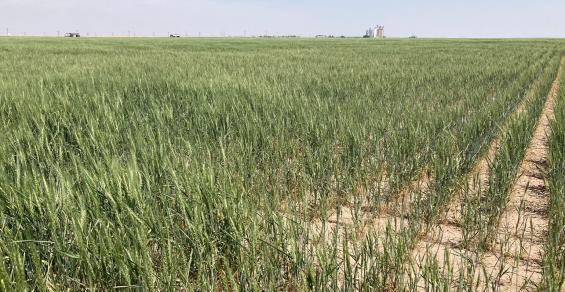The Day 1 average yield estimate is 39.5 bushels per acre across northern routes.
Wheat experts in Kansas were prepared to see effects of drought on the first day of the annual wheat tour. But even they may have been surprised at the extent of the situation.
The Wheat Quality Council’s annual Hard Winter Wheat Tour participants got an early-morning start on Day 1, Tuesday (May 17), leaving Manhattan, Kan., and traveling west across the northern half of the state to evaluate the 2022 wheat crop.
The final daily average reported in Colby, after 248 stops, was 39.5 bushels per acre. That’s just about 20 bushels per acre less than the 2021 Day 1 estimate of 59.2 bushels per acre.
ROUTE MAP: The Wheat Quality Council takes the same routes every year. Here you see the color-coded routes, starting in Manhattan, Kan., and stopping in Colby and Wichita before returning to Manhattan.
The word of the day — drought.
Northern Kansas
Jeanne Falk-Jones, agronomist with the Sunflower Extension District, reports that farmers in northwest Kansas have struggled with having enough moisture for the life span of this wheat crop. She said farmers in the Colby area gambled on dusting the crop in last fall, and then faced a dry winter with very dry snows — if any — and that’s resulted in thin stands with low tillering, and overall, a plant that’s grown under a lot of stress.
“The theme of our wheat crop is short and thin in northwest Kansas,” Falk-Jones says. Right now, the crop has set its number of kernels, she explains. Rains from this point on are just protecting any yield potential in those heads as the crop undergoes pollination and grain fill.
Nebraska and Colorado
The wheat tour has one route that goes into southern Nebraska, but it doesn’t reach into Colorado — so typically, representatives from the wheat industry in those states report on Day 1.
Brad Erker, Colorado Wheat Administrative Committee executive director, said he went out the last two weeks with others in Colorado, to evaluate the crop. He says the USDA National Agricultural Statistics Service estimate for Colorado, of 49 million bushels, is probably too optimistic compared to what he’s seen.
Erker estimates that 30% of acres in the state will be abandoned due to drought. With an estimated average of 28.6 bushels per acre, that comes out to a projected 40.1-million-bushel crop for the state. That’s almost 30 million bushels lower than last year’s 69.56-million-bushel crop.
He says farmers are holding onto wheat acres as best as they can, because there’s just not enough moisture in some southern Colorado counties to get another crop like millet or corn up and growing.
Kent Lawrence, a director on the Nebraska Wheat Board, reported his state’s estimate that of the 930,000 acres planted to wheat, the Nebraska Wheat Board estimates this crop will produce 36.9 million bushels, with an estimate of a 41-bushel-per-acre average for the state.
Low disease pressure
If there is one bright spot in all this, it’s that farmers aren’t facing a whole lot of disease pressure. It’s just too dry for rusts to flare up, even if they blow in from the south. There’s not enough morning dew to sustain them.
Romulo Lollato, Kansas State University Extension wheat and forages specialist, adds that while rusts aren’t a problem, there are reports farther east in the southern half of the state of wheat streak mosaic virus — which is unusual. The tour will expect to see signs of that tomorrow, (Wednesday, May 18), as it travels south from Colby, and then crosses the state to the east to end in Wichita.
Be sure to follow along with the wheat tour on the Kansas Farmer Twitter account and Facebook page. And follow #wheattour22 for updates from various routes throughout the day.




